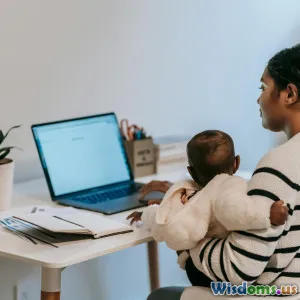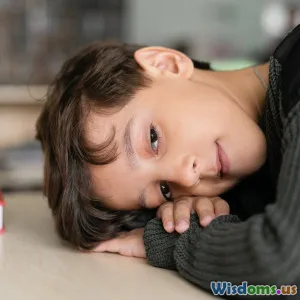
Creative Writing: A Path to Self Discovery
8 min read Explore how creative writing unlocks self-discovery, personal growth, and emotional clarity through storytelling and introspection. (0 Reviews)
Creative Writing: A Path to Self Discovery
Introduction
In a world brimming with distractions and constant stimuli, the quest for understanding oneself can often be a daunting journey. Creative writing stands out as a remarkable compass in this internal exploration—a medium that extends beyond mere words to become a mirror reflecting our deepest thoughts, fears, and dreams. This article delves into how creative writing is not only an art form but also a powerful pathway to self-discovery, elucidating the mechanisms through which telling stories about ourselves or imaginary worlds helps unveil our inner realities.
The Transformative Power of Storytelling
Storytelling has been intrinsic to human culture for millennia. Its roots trace back to oral traditions, where sharing tales was a communal process of preserving knowledge and identity. Today, creative writing continues this legacy but plays an increasingly personal role.
Writing as an Act of Reflection
When we write creatively, we step into a reflective dialogue with our mind. Psychologists affirm that narratives help organize chaotic thoughts and feelings, making abstract emotions tangible and comprehensible. Dr. James Pennebaker, a pioneer in expressive writing research, demonstrated that writing about traumatic or emotional experiences for just 15-20 minutes over several days markedly improves both mental and physical health. This process invites writers to confront hidden anxieties or hopes and fosters a clearer sense of self.
Case Study: Creative Writing Workshops and Emotional Health
A 2019 study published in the journal Arts & Health revealed that participants in community creative writing workshops reported increased self-awareness and emotional resilience. One participant remarked, "Writing gave me a 'safe space' to confront feelings I usually avoid. It helped me understand my reactions and start healing."
Uncovering Identity Through Character and Voice
One of the unique aspects of creative writing is the ability to construct characters and narratives that can serve as proxies for different parts of our identities.
Exploring Multiple Perspectives
By embodying diverse voices, writers experiment with viewpoints distinct from their own. This exercise can highlight subconscious biases, desires, and conflicts. For example, writing from the perspective of an antagonist might reveal complex emotional dimensions within ourselves, fostering empathy and self-acceptance.
The Role of Journaling Through Fiction
Unlike straightforward journaling, which is often factual and chronological, fictive writing blends imagination and reality. This fusion encourages the eruption of symbolism and metaphor that can deepen self-insight. The allegorical power in short stories or poems invites interpretation both from the writer and readers, often unveiling layers of self previously unrecognized.
Creative Writing Techniques That Promote Self-Discovery
Adopting specific creative writing methods can further accelerate personal exploration:
Freewriting
This technique involves writing continuously for a fixed time, uncensored and unedited. It silences the internal critic and encourages subconscious material to surface. Julia Cameron, author of The Artist’s Way, champions "morning pages" (a form of freewriting) to bypass creative blocks and connect with the authentic self.
Writing Prompts Focused on Self-Exploration
Examples include prompts like "Describe a moment when you felt truly alive," or "Write a letter to your younger self." These target introspection while mitigating the pressure of constructing fully-formed narratives.
Memoir and Personal Essays
While blending fact and literary technique, these genres demand honest excavation of personal history. They foster healing by capturing pivotal moments with nuance and emotional depth.
The Psychological and Neurological Links
Recent neuroscience findings support the benefits of creative writing as a tool for self-discovery and emotional regulation:
-
Activation of the Default Mode Network (DMN): This brain network, associated with self-referential thought and memory, is stimulated during storytelling, enhancing problem-solving and insight generation.
-
Reduced Cortisol Levels: Expressive writing has been linked with decreased stress hormone levels, which directly contributes to improved mental well-being.
These physiological effects clarify why many writers report a sense of calm and clarity after writing sessions.
Inspiring Examples from Literature
Great authors often share their journeys of finding themselves through writing:
-
Sylvia Plath used poetry and prose to wrestle with identity and mental illness, giving voice to pain that was otherwise inexpressible.
-
James Baldwin’s autobiographical works intricately trace racial and sexual identity formation amidst societal pressures, illustrating writing as a map to understanding self in context.
-
Maya Angelou’s memoirs transformed personal trauma into powerful narratives of resilience and empowerment.
These examples reinforce how creative writing can serve not only as therapy but also as a beacon illuminating the path to a fuller, truer self.
How to Begin Your Own Journey
Starting can feel intimidating, but the process needn't be perfect or publishable. Here are practical steps:
- Commit Regular Time: Even 10-15 minutes a day establishes momentum.
- Create a Writing Ritual: Whether it’s a cup of tea, a favorite pen, or a quiet nook, rituals prepare your mind to dive in.
- Embrace Imperfection: Your first drafts are raw insights, not final products.
- Seek Feedback With Care: Trusted friends or writing groups can offer perspectives, but the journey remains personal.
- Reflect on Patterns: Re-reading your work after weeks encourages spotting growth and recurring themes.
Conclusion
Creative writing is far more than crafting stories or poems; it’s a transformative pilgrimage within the self’s fertile landscape. By engaging technique, mindfulness, and imagination, the act of writing invites healing, self-awareness, and authentic expression. As countless writers demonstrate, this path leads not only to better understanding but also to empowerment and emotional freedom. Whether you are an aspiring novelist or someone seeking clarity amid life’s chaos, embracing the art of creative writing can illuminate the intricate mosaic of who you really are, unlocking doors that conventional conversation often leaves closed.
Embark on your writing journey not just to tell stories, but to discover the storyteller within.
Rate the Post
User Reviews
Popular Posts





















